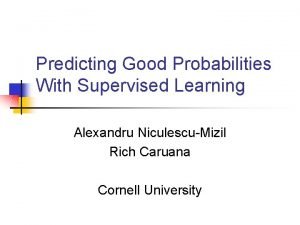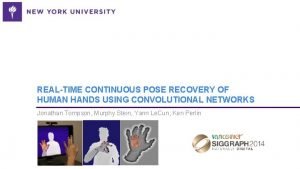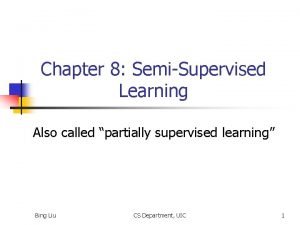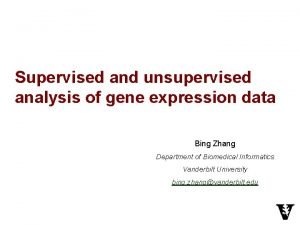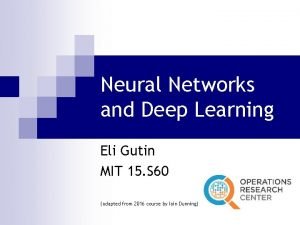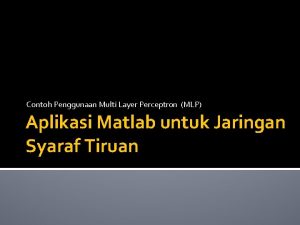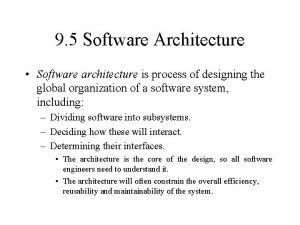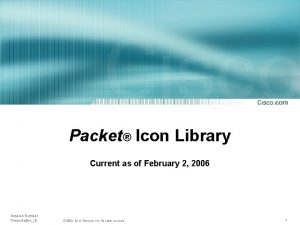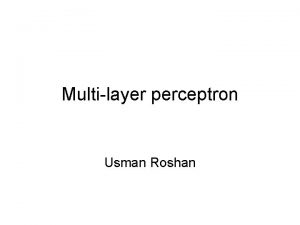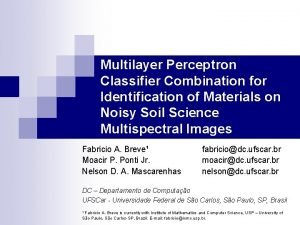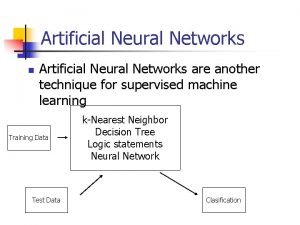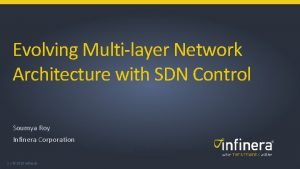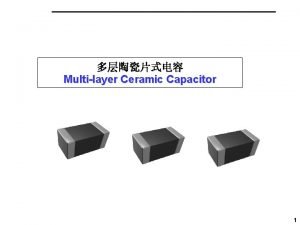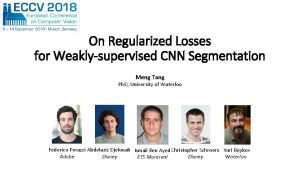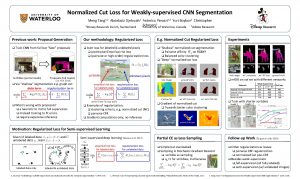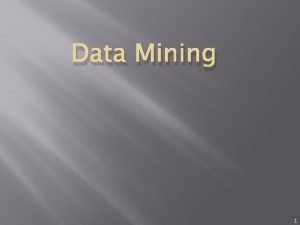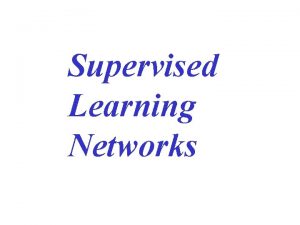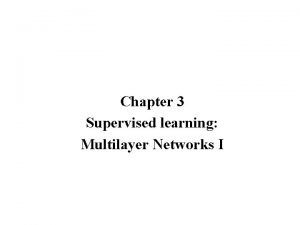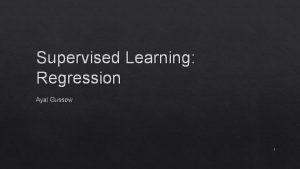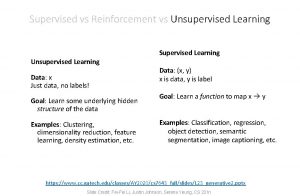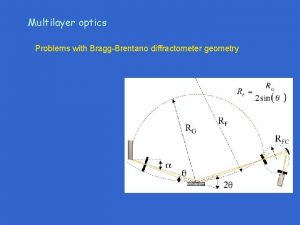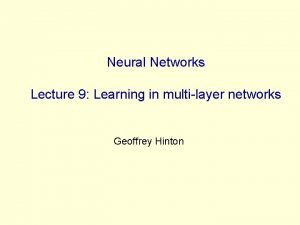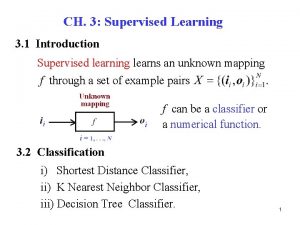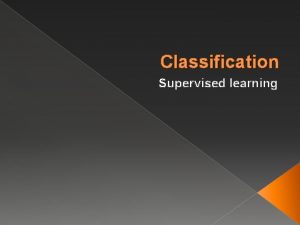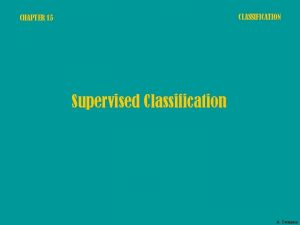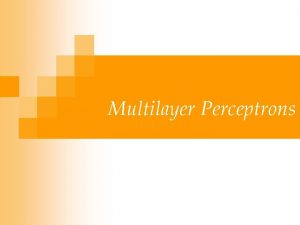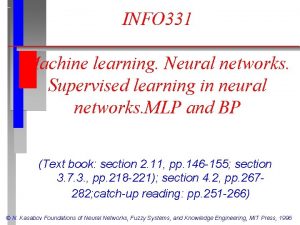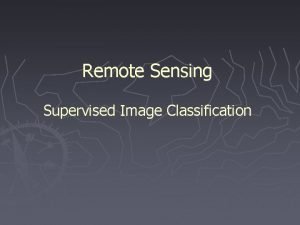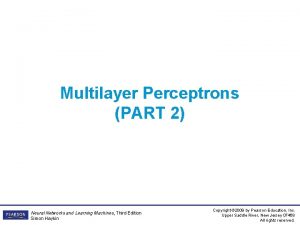Chapter 4 Supervised learning Multilayer Networks II Other































- Slides: 31

Chapter 4 Supervised learning: Multilayer Networks II

Other Feedforward Networks • Madaline – Multiple adalines (of a sort) as hidden nodes – Weight change follows minimum disturbance principle • Adaptive multi-layer networks – Dynamically change the network size (# of hidden nodes) • Prediction networks – BP nets for prediction – Recurrent nets • Networks of radial basis function (RBF) – e. g. , Gaussian function – Perform better than sigmoid function (e. g. , interpolation) in function approximation • Some other selected types of layered NN

Madaline • Architectures – Hidden layers of adaline nodes – Output nodes differ • Learning – Error driven, but not by gradient descent – Minimum disturbance: smaller change of weights is preferred, provided it can reduce the error • Three Madaline models – Different node functions – Different learning rules (MR I, II, and III) – MR I and II developed in 60’s, MR III much later (88)

Madaline MRI net: – Output nodes with logic function MRII net: – Output nodes are adalines MRIII net: – Same as MRII, except the nodes with sigmoid function

Madaline • MR II rule – Only change weights associated with nodes which have small |netj | – Bottom up, layer by layer • Outline of algorithm 1. At layer h: sort all nodes in order of increasing net values, remove those with net <θ, put them in S 2. For each Aj in S if reversing its output (change xj to -xj) improves the output error, then change the weight vector leading into Aj by LMS of Adaline (or other ways)

Madaline • MR III rule – Even though node function is sigmoid, do not use gradient descent (do not assume its derivative is known) – Use trial adaptation – E: total square error at output nodes Ek: total square error at output nodes if netk at node k is increased by ε (> 0) – Change weight leading to node k according to or – Update weight to one node at a time – It can be shown to be equivalent to BP – Since it is not explicitly dependent on derivatives, this method can be used for hardware devices that inaccurately implement sigmoid function

Adaptive Multilayer Networks • Smaller nets are often preferred – Computing is faster – Generalize better – Training is faster • Fewer weights to be trained • Smaller # of training samples needed • Heuristics for “optimal” net size – Pruning: start with a large net, then prune it by removing unimportant nodes and associated connections/weights – Growing: start with a very small net, then continuously increase its size with small increments until the performance becomes satisfactory – Combining the above two: a cycle of pruning and growing until performance is satisfied and no more pruning is possible

Adaptive Multilayer Networks • Pruning a network by removing – Weights with small magnitude (e. g. , ≈ 0) – Nodes with small incoming weights – Weights whose existence does not significantly affect network output • If is negligible – By examining the second derivative – Input nodes can also be pruned if the resulting change of is negligible

Adaptive Multilayer Networks • Cascade correlation (example of growing net size) – Cascade architecture development • Start with a net without hidden nodes • Each time one hidden node is added between the output nodes and all other nodes • The new node is connected TO output nodes, and FROM all other nodes (input and all existing hidden nodes) • Not strictly feedforward

Adaptive Multilayer Networks – Correlation learning: when a new node n is added • first train all input weights to node n from all nodes below (maximize covariance with current error of output nodes E) • then train all weight to output nodes (minimize E) • quickprop is used • all other weights to lower hidden nodes are not changes (so it trains fast)

Adaptive Multilayer Networks – Train wnew to maximize covariance xnew • covariance between x and Eold wnew • when S(wnew) is maximized, variance of from mirrors that of error from , • S(wnew) is maximized by gradient ascent

Adaptive Multilayer Networks – Example: corner isolation problem • Hidden nodes are with sigmoid function ([-0. 5, 0. 5]) • When trained without hidden node: 4 out of 12 patterns are misclassified • After adding 1 hidden node, only 2 patterns are misclassified • After adding the second hidden node, all 12 patterns are correctly classified • At least 4 hidden nodes are required with BP learning X X

Prediction Networks • Prediction – Predict f(t) based on values of f(t – 1), f(t – 2), … – Two NN models: feedforward and recurrent • A simple example (section 3. 7. 3) – Forecasting commodity price at month t based on its prices at previous months – Using a BP net with a single hidden layer • • • 1 output node: forecasted price for month t k input nodes (using price of previous k months for prediction) k hidden nodes Training sample: for k = 2: {(xt-2, xt-1) xt} Raw data: flour prices for 100 consecutive months, 90 for training, 10 for cross validation testing • one-lag forecasting: predict xt based on xt-2 and xt-1 multilag: using predicted values for further forecasting

Prediction Networks • Training: – 90 input data values – Last 10 prices for validation test – Three attempts: k = 2, 4, 6 – Learning rate = 0. 3, momentum = 0. 6 – 25, 000 – 50, 000 epochs – 2 -2 -2 net with good prediction – Two larger nets over-trained (with larger prediction errors for validation data) Results Network 2 -2 -1 4 -4 -1 6 -6 -1 Training one-lag multilag MSE 0. 0034 0. 0045 0. 0034 0. 0098 0. 0100 0. 0028 0. 0121 0. 0176

Prediction Networks • Generic NN model for prediction – Preprocessor prepares training samples from time series data – Train predictor using samples (e. g. , by BP learning) • Preprocessor – In the previous example, • Let k = d + 1 (using previous d + 1 data points to predict) • – More general: • ci is called a kernel function for different memory model (how previous data are remembered) • Examples: exponential trace memory; gamma memory (see p. 141)

Prediction Networks • Recurrent NN architecture – Cycles in the net • Output nodes with connections to hidden/input nodes • Connections between nodes at the same layer • Node may connect to itself – Each node receives external input as well as input from other nodes – Each node may be affected by output of every other node – With a given external input vector, the net often converges to an equilibrium state after a number of iterations (output of every node stops to change) • An alternative NN model for function approximation – Fewer nodes, more flexible/complicated connections – Learning procedure is often more complicated

Prediction Networks • Approach I: unfolding to a feedforward net – Each layer represents a time delay of the network evolution – Weights in different layers are identical A fully connected net of 3 nodes – Cannot directly apply BP learning (because weights in different layers are constrained to be identical) – How many layers to unfold to? Hard to determine Equivalent FF net of k layers

Prediction Networks • Approach II: gradient descent – A more general approach – Error driven: for a given external input – Weight update

NN of Radial Basis Functions • Motivations: better performance than sigmoid functions – Some classification problems – Function interpolation • Definition – A function is radial symmetric (or is RBF) if its output depends on the distance between the input vector and a stored vector related to that function • • Output – NN with RBF node function are called RBF-nets

NN of Radial Basis Functions • Gaussian function is the most widely used RBF – a bell-shaped function centered at u = 0. – Continuous and differentiable – Other RBF • Inverse quadratic function, hypersh]pheric function, etc μ Gaussian function μ Inverse quadratic function μ hyperspheric function

• Consider Gaussian function again – gives the center of the region for activating this unit – gives the max output – c determines the size of the region ex: for c = 0. 1 c = 1. 0 c = 10. Small c u = 0. 03246 u = 0. 3246 u = 3. 246 Large c

NN of Radial Basis Functions • Pattern classification – 4 or 5 sigmoid hidden nodes are required for a good classification – Only 1 RBF node is required if the function can approximate the circle x x x x xx

NN of Radial Basis Functions • XOR problem – 2 -2 -1 network • 2 hidden nodes are RBF: • Output node can be step or sigmoid – When input x is applied • Hidden node calculates distance then its output • All weights to hidden nodes set to 1 • Weights to output node trained by LMS • t 1 and t 2 can also been trained x (1, 1) (0, 1) (1, 0) (0, 0) 1 0. 3678 0. 1353 0. 3678 1 (0, 0) (0, 1) (1, 0) (1, 1)

NN of Radial Basis Functions • Function interpolation – Suppose you know and ) by linear interpolation: , to approximate ( – Let be the distances of from and then i. e. , sum of function values, weighted and normalized by distances – Generalized to interpolating by more than 2 known f values • • Only those with small distance to are useful

NN of Radial Basis Functions • Example: – 8 samples with known function values – can be interpolated using only 4 nearest neighbors

NN of Radial Basis Functions • Using RBF node to achieve neighborhood – One hidden node per sample xp: = xp, and – Network output for approximating weights wp = dp/P is proportional to output node hidden RBF nodes: Output (||x – xp||) x

NN of Radial Basis Functions • Clustering samples – Too many hidden nodes when # of samples is large – Grouping similar samples (having similar input and similar desired output) together into N clusters, each with • The center: vector • Mean desired output: • Network output: • Suppose we know how to determine N and how to cluster all P samples (not a easy task itself), and can be determined by learning

NN of Radial Basis Functions • Learning in RBF net – Objective: learning to minimize – Gradient descent approach – One can also obtain learning for only by other clustering techniques, then use GD

NN of Radial Basis Functions • A strategy for learning RBF net – Start with a single RBF hidden node for a single cluster containing only the first training sample. – For each of the new training samples x • If it is close to any of the existing clusters, do the gradient descent based updates of the w and φ for all clusters/hidden nodes • Otherwise, adding a new hidden node for a cluster containing only x • RBF networks are universal approximators – same representational power as BP networks

Polynomial Networks • Polynomial networks – Node functions allow direct computing of polynomials of inputs – Approximating higher order functions with fewer nodes (even without hidden nodes) – Each node has more connection weights • Higher-order networks – # of weights per node: – Can be trained by LMS – General function approximator

Polynomial Networks • Sigma-pi networks – Does not allow terms with higher powers of inputs, so they are not a general function approximator – # of weights per node: – Can be trained by LMS • Pi-sigma networks – One hidden layer with Sigma function: – Output nodes with Pi function: • Product units: • Node computes product: • Integer power Pj, i can be learned • Often mix with other units (e. g. , sigmoid)
 Bcmsn
Bcmsn Lda supervised or unsupervised
Lda supervised or unsupervised Perbedaan supervised learning dan unsupervised learning
Perbedaan supervised learning dan unsupervised learning Alexandru niculescu-mizil
Alexandru niculescu-mizil Supervised learning pipeline
Supervised learning pipeline Partially supervised learning
Partially supervised learning Wsbgixdc9g8 -site:youtube.com
Wsbgixdc9g8 -site:youtube.com Supervised and unsupervised learning
Supervised and unsupervised learning Supervised learning
Supervised learning Strategic multilayer assessment
Strategic multilayer assessment 底片尺寸
底片尺寸 Contoh soal multilayer perceptron
Contoh soal multilayer perceptron Multilayer architecture
Multilayer architecture Multi layer fabric
Multi layer fabric Ip packet icon
Ip packet icon Multilayer perceptron
Multilayer perceptron Multilayer perceptron
Multilayer perceptron Multilayer neural network
Multilayer neural network Multilayer inspection firewall
Multilayer inspection firewall Multilayer sdn
Multilayer sdn Multilayer mirror
Multilayer mirror Multilayer security architektur
Multilayer security architektur Multilayer ceramic capacitor
Multilayer ceramic capacitor Comparison of virtual circuit and datagram networks
Comparison of virtual circuit and datagram networks Basestore iptv
Basestore iptv Cuadro comparativo de e-learning b-learning y m-learning
Cuadro comparativo de e-learning b-learning y m-learning Self-initiated other-repair examples
Self-initiated other-repair examples Normalized cut loss for weakly-supervised cnn segmentation
Normalized cut loss for weakly-supervised cnn segmentation Normalized cut loss for weakly-supervised cnn segmentation
Normalized cut loss for weakly-supervised cnn segmentation Supervised data mining
Supervised data mining Bruce a research chemist for a major petro-chemical company
Bruce a research chemist for a major petro-chemical company Supervised diversionary program
Supervised diversionary program



